- Home
- Zadie Smith
Feel Free: Essays Page 8
Feel Free: Essays Read online
Page 8
Both men have an improv background, and improv’s culture of mutual support suffuses their material. (Faced with an empty stage, Key explained, “If I bump into a ‘desk,’ then he walks into the room five minutes later and walks around that ‘desk.’ You don’t act, you react.”) From their enthusiastic LA valets, avid fans of the actor they call “Liam Neesons” (catchphrase: “Liam Neesons is my shit!”), to the two homoerotic Arabic gentlemen who frot each other while supposedly admiring passing hotties in full burkas (“You saw ankle bone?”), a natural chemistry—the product of a genuine relationship—is being turned up to eleven. “We’re brothers,” Peele said. “It’s not even best friends. It’s a total brother understanding.”
Twenty minutes later, Key and Peele had a nine-alarm fight—as Andre and Meegan. Andre was attempting to break up with Meegan, and Meegan was refusing to let him. She sat on a plush white sofa, surrounded by reality-TV-show-inspired furnishings, filing her nails and becoming, despite a veil of self-help language, increasingly incensed. (“Can I ask why? Because I’m doing a lot of, like, growth work on myself.”) Peele played it perfectly, but the camera angle was awkward and his wrist hair kept escaping the cuffs of Meegan’s pink velour tracksuit. As they reset, Peele subtly extemporized. The moment in which Meegan demands an explanation—“Grown adults give reasons!”—morphed into “Grown individuals present examples!”—a lift in register that proved unaccountably funnier. In response, a hapless Andre could only bellow and writhe in frustration.
“Meegan and Andre” is one of Key and Peele’s most popular recurring sketches, and plays to their strengths: Peele’s pitch-perfect ear for verbal tics and Key’s long-limbed physical comedy. As the sophistic, motor-mouthed Meegan, Peele gets to the core of what contemporary entitlement looks like—concern with one’s personal rights combined with non-interest in one’s duties—managing to place Meegan in that comedy sweet spot where girl power meets good old-fashioned narcissism. Key, meanwhile, uses all his native brio to embody an amiable jock, utterly dominated and forever perplexed as to why. “I was almost out the door,” Andre said twice to himself, as Meegan, satisfied that the break-up had been averted, grew bored and wandered off into the kitchen. Key put his head in his hands and arranged his body in the manner of a man drained of hope. This improvised gesture solved the problem of an explosive scene that seemed to dribble away, and Key carried it off with a sincerity that tipped the scale gently from comic toward tragic.
A little later, on a raised wooden deck at the back of the house, Key and Joel Zadak—who manages both Key and Peele—sat on high stools watching the footage. It was clear that Key had expanded Andre from the confused putz of previous seasons to something close to an emotionally abused person. If the depth Key brings to comic moments is unexpected, the bigger surprise is that he’s doing comedy at all: he intended to be a classical actor. After attending the University of Detroit Mercy, he got an MFA from the Pennsylvania State University School of Theater, and claims to have been a tad put out when, in 1997, he was invited to become a member of the Second City Detroit: “I’ve got an MFA! A Mother-Fucking-A! I took total umbrage!” (He still has dreams of playing the Dane, although, given his age and his schedule, he may have to wait for Lear. “‘Remember that night you said you’d do Hamlet?’” he said wistfully, quoting a Chicago actor friend’s recent query. “I was, like, ‘Call me in 2017.’”) But it is the mixture of the classical and the contemporary in him—the voice that sounds as natural saying “umbrage” as saying “mother-fucking”—that provides much of his comic charm.
Perhaps because of this background in dramatic theater, Key is the showman, the all-rounder, while there is a detail and a level of delicacy to Peele’s craft that require just the right frame to set it off. Beyond Key and Peele, it’s hard to imagine Peele in any vehicle not constructed around a comic character of his own devising, just as the Pink Panther series was essentially an elaborate showcase for the marvel that was Peter Sellers’s Inspector Clouseau. By contrast, you can envision Key in a variety of projects: off Broadway as Hamlet, but also presenting the Oscars, floating in space next to Sandra Bullock, or putting his hand on Tom Hanks’s shoulder, delivering some bad news. Whatever scene you set, Key will give you everything he’s got. But the same qualities that make Key such an easy and pleasant presence on set—amiability, flexibility, absence of dogma—also make him hard to pin down as a personality. He’s so good at reacting, so attuned to other people’s feelings, that it’s not always easy to assess what he feels. “I very often don’t know what’s fueling my passion,” he confessed, while someone fussed with Andre’s ludicrous ducktail. “I’m just being practical with the skill set that I have.”
That afternoon, during the Poitier sketch, which featured only Key, Peele unburdened himself of Meegan, re-dressed as himself and sat down beneath the dappled light of an orange tree, where he considered his career: “Fifteen, twenty years ago, I decided I wanted to be a sketch performer.” Not an unusual dream, perhaps, for a funny kid raised on the Upper West Side, a mile and a half from the Saturday Night Live studios, although few would have pursued it with Peele’s single-minded persistence. While at PS 87, the Metropolitan Opera did a workshop with his fifth-grade class; Peele was given the shy kid’s job of assistant stage manager, the duties of which included being understudy to one of the leads. When that actor called in sick, Peele filled in for several performances, playing the part of a “cool guy” (black leather jacket, sunglasses, chain), and discovering, in the process, how much he liked having an audience. Later, as a student at Sarah Lawrence—where he had intended to study puppeteering—he joined an improv troupe, which soon became his main concern; two years in, he dropped out of college entirely to form a comedy partnership with his college roommate and fellow troupe member Rebecca Drysdale, who’s now a writer on Key and Peele. (He realized, he has said, that he had no need of puppets. He would use himself: “the most intricate puppet of all.”) Drysdale and Peele called themselves “Two White Guys,” although they were—as the publicity made explicit—“a black guy and a white Jewish lesbian,” and went on to perform two well-received sketch shows at Chicago’s ImprovOlympic Theater before the rest of Peele’s Sarah Lawrence class had even graduated. Soon afterward, Peele joined Boom Chicago, an improv troupe based in Amsterdam, which has a remit to create comedy that “addresses Dutch, American and world social and political issues,” although Peele made his mark playing Ute, a vapid Danish supermodel and an occasional presenter of the Eurovision Song Contest. (She had a Eurotrash accent and said things like “Yes, because, like, if you have English as a second language it’s hard to make your head talk!”)
Becoming other people: this is Peele’s gift. The small scraps online of his forays into stand-up reveal a man who doesn’t quite know who to be onstage—there’s no persona he’s happy to be stuck in—and Peele, recognizing this, abandoned the form early. “The one thing that you don’t figure out as an improviser or a sketch performer is ‘What am I?’” he observed. The essence of his talent is multi-vocal, and he has, in the past, attributed this to his childhood anxiety at having the wrong voice, which, in his case, meant speaking like his mother—that is, speaking “white.” (“It cannot be a coincidence that I decided to go into a career where my whole purpose is altering the way I speak and experiencing these different characters and maybe proving in my soul that the way someone speaks has nothing to do with who they are,” he told Terry Gross, on Fresh Air.) In improv, the question of authenticity becomes irrelevant: the whole point is to fake it.
To watch the afternoon’s filming, I walked next door, into a modern living room disguised as a late-fifties interior, complete with sideboard and drinks cabinet and cut-glass tumblers half filled with fake whiskey. Key was struggling through an awkward meal with his white girlfriend and her parents, who he believes dislike him because he’s black. It’s only when he stands up, affronted, and prepares to walk out—“There’s no point in tr
ying to reason with people who can’t appreciate the differences in others”—that we see that he has a great big tail (to be added in post-production). The mother says, “I cannot believe you brought a black man into our house!” A moment later, the camera pulls back for the punchline: everybody has a tail. During a pause in filming—as the crew discussed the timing of the tail reveal—Bonnie Bartlett, the actress playing the mother, who is in her mid-eighties, turned to Key and murmured, “It must have been interesting to be your mother, because you’re so . . .” She touched her own—pink—face. A moment later, perhaps worried that she’d given offense, Bartlett looked stricken, but Key smiled kindly. “I think that’s a fair statement of the case,” he said. “Now, where are you from, Bonnie?” “Illinois.” “You’re kidding me!” The actress, encouraged, began to tell her story: “My hometown was settled by men taken there to work . . . these Swedish men . . .” She faded. “Really,” Key persisted, with great warmth. “That’s such an interesting story.” The crew reset the cameras. This time, when Bartlett’s line came around, she said, “I can’t believe you would bring a dark man into this house.” Cut. Bartlett looked stricken once more: “I can’t believe I said ‘dark’! But we didn’t say ‘black’ in those days . . .” Key turned anthropological, objectively curious: “What did you say? Did you say ‘Negro’?” Bartlett, relieved, considered the question: “‘Colored,’ I think . . .” Key thanked her for the smart correction: they went with “colored.”
Key and Peele met—as Key recently told Jimmy Kimmel—in 2003, when they “fell in comedy love” while performing on consecutive nights in Chicago, at the Second City Theater. Peele was visiting with Boom Chicago, doing his Ute bit; Key was playing a sociopathic high-school gym instructor called Coach Hines, who “inspires” his teenage students by regularly enumerating all the ways in which he will violently murder them if they do anything wrong. Improv is not a world overburdened with people of color, but neither man felt territorial when, soon after, they each auditioned for Fox’s raucous, satirical sketch show Mad TV. In the end, they were both hired, and quickly put to work, mainly impersonating black celebrities—Ludacris, Bill Cosby, Snoop Dogg—but also doing some of the kind of detailed fictional work they would later develop on Key and Peele. Coach Hines became a recurring spot, while Peele turned an impersonation of the rapper 50 Cent into a character study, in which Key, as Fifty’s manager, phones the rapper to tell him of the chart dominance of his rival Kanye West. 50 Cent, heartbroken, sings a maudlin song called “Sad 50 Cent.” (Sample lyric: “I walk around my prostitute garden, and my carousel. Nothing seems to make me smile today.” The song was nominated for an Emmy in 2008.) The humor on Mad TV was broad—and too reliant on celebrity subjects—but it was a great place to hone your sketch-writing skills, and made both men, especially Peele, usefully hunger for a time when a joke wouldn’t have to pass through a dozen producers to get on the air.
Toward the end of their five-season stint, a big-eared, biracial senator began to make headlines and, a short while later, became president. SNL needed an impersonator. This was, for Peele, “the dream. That was what I set out to do.” But when the call came he was under contract to Mad TV. He was devastated that a legal matter was screwing him up, especially when he had, he felt, “strategized everything perfectly.” Watching the other Obamas on SNL was a “strange, strange little period” in his life, but also motivating: “I think the strategist in me went, ‘All right, well what does this mean? This means there’s gotta be something that I can put these skills into; there’s gotta be a reason I’m not doing this, ultimately.’” When Peele was freed from his Mad TV contract, in 2009—and after a pilot for Fox went nowhere—he and Key began discussing a sketch show, and a young director named Peter Atencio immediately came to mind.
Key had met Atencio when they made a Web series on a green screen in the “crappy one-bedroom apartment in Hollywood” that Atencio describes himself as living in at the time (“It was for MySpace, which dates how long ago that was”), having moved from Boulder, Colorado, at nineteen, in the hope of making movies. They liked each other and kept in touch; Key introduced Peele to Atencio. Only thirty-one now, he was twenty-seven when Key and Peele managed to persuade Comedy Central to accept him after the studio’s first choice for director dropped out. With a small team of eight writers and four producers, the first season was written over thirteen weeks, creating two hundred and sixty sketches that were later pared down to fifty-four. Atencio has directed every episode of Key and Peele, until this current season. After the network put in for a double order of episodes, post-production on the first half began overlapping with the filming of the second; unwilling to relinquish control of color and sound mixing, Atencio conceded a third of the season to a trio of directors. But, even when he’s not himself directing, he’s a frequent visitor wherever Key and Peele is filming, which, on the day we spoke, happened to be a standard-issue black box of a set, deep within the Universal Studios complex.
Extras were filing through the sun-baked parking lot to play the crowd at a basketball game, and Atencio stood in the studio’s doorway like a benign house spirit, watching them pass, nodding at producers and then walking across the room to greet Key and Peele, where they sat “courtside,” having their wigs tweaked. Tall and lumbering, with a soft, pale, pouchy face partly obscured by thick geek glasses and a baseball cap, he was dressed in baggy streetwear, all of it a little lopsided on his large frame, and looked more like a visiting weed dealer than the man who usually runs the show. Back outside, he blinked moleishly in the sun. “I live within it,” he said, speaking of the series. “It is my life. It’s definitely the only way I know how to do it. It’s probably the only way it could be done.”
From the outset, Atencio wanted Key and Peele to have a distinct look. He recalled that his pitch was to “make every sketch the funniest set piece in a movie.” Rather than resorting to the kind of verbal exposition on which so much sketch comedy relies, he suggested using “visual information, editing cues, things that kind of set the tone and the mood so that you don’t have to do it in the writing.” A goofy scene concerning the frustration of holding a “Group 1” boarding card as various groups file on to the plane right in front of you—“Uniformed military personnel . . . People in wheelchairs. Any priests, nuns, rabbis, imams. Any old people in wheelchairs with babies. Any old religious people with military babies. Jason Schwartzman. Anyone with a blue suitcase”—culminates with Key, still clutching his ticket, sitting amid the movie-grade wreckage of a commercial airliner. It looks so epic and expensive it draws gasps as well as laughs but was shot relatively cheaply by Atencio on the War of the Worlds set at Universal Studios.
Comedy Central promoted the first season with the tagline “If you don’t watch this show, you’re a racist,” but Key and Peele rarely resorts to the kind of binary racial humor so appreciated by Homer Simpson—black people do this, white people do that—and the color line is far from being its sole concern. (Nor is it all pathos, pathos, pathos. One sketch ponders the eternal question “What if names were farts?”). Where the comedy is racial, the familiar, singular “race card” is switched for something more like the whole pack fanned out, with the focus on what Peele has called “the absurdity of race.” “I always look back at standardized tests,” he said, as he sat in Hair and Makeup, submitting to a small but significant wig transition from “sports announcer” to “sportscaster.” “They make you say what race you are, where you check out, and I think that’s ultimately an unhealthy tradition.” His eyes, naturally rather narrow, widened dramatically. “It is crazy that as a kid we’re taught, ‘What is your identity?’ We’re asked that!” Key, who sat at the other end of the trailer, going from having hair to being bald to having hair again, is similarly struck by the irrational nature of racial categories. “The limbic system is alive and well,” he said. “And it’s going, ‘I need to find a category. I need to find a category. If I don’t find a category, I’m n
ot safe.’”
He seemed to be referring to a neurological theory according to which the limbic system is responsible for our primal reactions—such as recognizing membership within a certain tribe—because it looks for visual equivalences between things, whereas our prefrontal cortex, which developed later, is able to make complex cognitive decisions. “So the thing is: the limbic system is still kicking it, hard,” he continued. “And people are going to fight it, but naturally try to categorize themselves. Because when all we had was a limbic system people were, like, ‘Dude, there’s us and those fucking saber-toothed tigers, so we all have to stick together.’” This led to a discussion of how tiny differences in phenotype—the relative “flatness” of Peele’s nose compared with the higher bridge of Key’s—can create differences in people’s lives, both in the way that we are comprehended by others and in the way, especially as children, we comprehend ourselves.
Key: “Jordan and I are . . . we’re biracial.”
Peele: “Yes. Half black, half white.”
Key: “And because of that we find ourselves particularly adept at lying, er, because on a daily basis we have to adjust our blackness.”
This moment occurs onstage, in the first episode of Key and Peele, while they are out of character, speaking to a live studio audience, and it has some of stand-up’s confessional feel. Sometimes, they explain, this adjustment has to happen simply to “terrify white people.” (Without it, “we sound whiter than the black dude in the college a cappella group. We sound whiter than Mitt Romney in a snowstorm.”) But it may also be a way of seeking approval from the other side of the line. “When we’re around other brothers and sisters,” Peele says, with a sly smile, “you gotta dial it up.” This leads to a demonstration of blackness dialed up (“You know what I’m talking about, brother—and you know I know what you’re talking about; and you know I know you know; no doubt no doubt no doubt . . .”), complete with physical gestures, which aren’t the familiar, supposedly “black” gestures of TV comedy (no gang signs or exaggerated side-to-side head bopping) but are still, of course, stereotypical. The heads move, but the movement is far more closely, accurately, observed, and then expanded upon: Peele’s little shuffling dance of joy, the way Key closes his eyes to signify assent. I would describe it as a fond imitation.

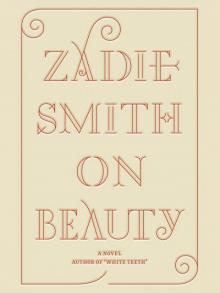 On Beauty
On Beauty Nw
Nw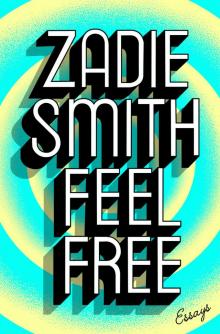 Feel Free: Essays
Feel Free: Essays The Book of Other People
The Book of Other People White Teeth
White Teeth Changing My Mind: Occasional Essays
Changing My Mind: Occasional Essays N.W.
N.W. Swing Time
Swing Time The Embassy of Cambodia
The Embassy of Cambodia The Autograph Man
The Autograph Man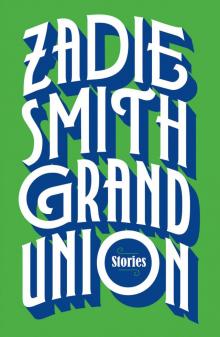 Grand Union
Grand Union Intimations
Intimations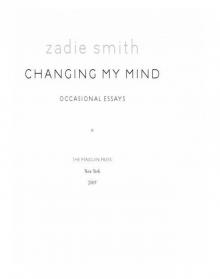 Changing My Mind
Changing My Mind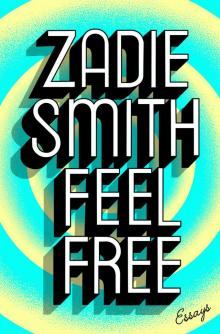 Feel Free
Feel Free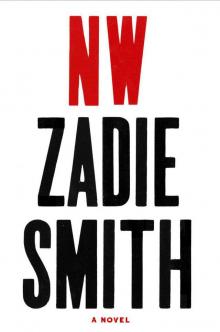 NW: A Novel
NW: A Novel